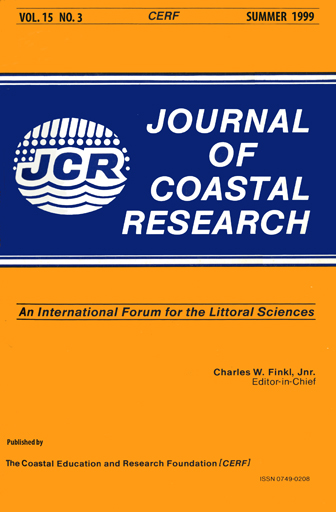Arcuate Duneline Embayments, Infragravity Signals, Rip Currents and Wave Refraction at Waihi Beach, New Zealand
Keywords:
Wave focusing, Bay of Plenty, swash run-up, rhythmic beach topography.Abstract
Arcuate duneline embayments (ADEs) are uneven rhythmic features cut into the frontal dune and beach, ranging between 800m to 2500m long in the longshore direction. Investigation of the causative processes of ADEs included: the perusal of historical aerial photograph records; rip current observations; identification of infragravity wave motions; and numerical simulation of wave refraction and focusing.
ADEs were found to be erosional features that shift in location, but do not migrate in a consistent longshore direction. Infragravity wave signals identified in the swash run-up distance time-series and in nearshore orbital velocities were not maintained for sufficient duration to form rhythmic features of a similar length scale to the ADEs. Rip current erosion over the study period was observed to be localised and on much smaller spatial scale to the ADEs and several individual rip currents would fit into a single ADE. The focusing of waves at the beach due to refraction over offshore topographic irregularities was investigated by numerical simulation and provides a likely mechanism for the formation of ADEs at Waihi Beach with substantial agreement between peaks in longshore wave energy at the beach and the historical location of ADEs. We discern between the mechanism of "rip-current-embayment" formation (KOMAR, 1971, 1983a, b; KOMAR and HOLMAN, 1986) and that of direct wave attack on the back beach and dune due to wave refraction and focusing, and suggest that the application of the latter mechanism is responsible for their formation.


